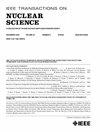基于机器学习的时隙 ADC 失配校准
IF 1.9
3区 工程技术
Q3 ENGINEERING, ELECTRICAL & ELECTRONIC
引用次数: 0
摘要
时间交错模数转换(TIADC)技术是实现高采样速度的有效方法。然而,并行子模数转换器(ADC)之间存在的不匹配问题是 TIADC 设计中的一个关键挑战,会对系统性能产生不利影响。在本文中,我们提出了一种基于机器学习的方法,以解决宽带输入信号频率中的这些不匹配问题。与传统方法不同的是,这种方法避免了复杂和特定的矩阵运算,并减少了为达到给定重构精度所需的补偿滤波器阶数。为了评估我们提出的方法的有效性,我们设计了一个 5 Gs/s 12 位 TIADC 系统。通过广泛的测试,结果表明实时校准后的有效位数(ENOBs)有了显著提高。具体来说,对于低于 500 MHz 的输入频率,ENOB 超过了 9 位,而对于 500 MHz 至 1.25 GHz 的频率,ENOB 则超过了 8 位。本文章由计算机程序翻译,如有差异,请以英文原文为准。
Machine-Learning-Based Mismatch Calibration for Time-Interleaved ADCs
The time-interleaved analog-to-digital conversion (TIADC) technique provides an effective way to achieve high sampling speed. However, a critical challenge in TIADC design arises from the presence of mismatches among parallel sub-analog-to-digital converters (ADCs), which detrimentally affect system performance. In this article, we propose a machine-learning-based method to address these mismatches across a broadband of input signal frequencies. Different from conventional approaches, this method avoids complex and specific matrix operations and reduces the compensation filter order required to achieve a given reconstruction accuracy. To assess the efficacy of our proposed method, we designed a 5-Gs/s 12-bit TIADC system. Through extensive testing, the results demonstrate notable improvements in the effective number of bits (ENOBs) following real-time calibration. Specifically, for input frequencies below 500 MHz, the ENOB surpasses 9 bits, while for frequencies ranging from 500 MHz to 1.25 GHz, it exceeds 8 bits.
求助全文
通过发布文献求助,成功后即可免费获取论文全文。
去求助
来源期刊

IEEE Transactions on Nuclear Science
工程技术-工程:电子与电气
CiteScore
3.70
自引率
27.80%
发文量
314
审稿时长
6.2 months
期刊介绍:
The IEEE Transactions on Nuclear Science is a publication of the IEEE Nuclear and Plasma Sciences Society. It is viewed as the primary source of technical information in many of the areas it covers. As judged by JCR impact factor, TNS consistently ranks in the top five journals in the category of Nuclear Science & Technology. It has one of the higher immediacy indices, indicating that the information it publishes is viewed as timely, and has a relatively long citation half-life, indicating that the published information also is viewed as valuable for a number of years.
The IEEE Transactions on Nuclear Science is published bimonthly. Its scope includes all aspects of the theory and application of nuclear science and engineering. It focuses on instrumentation for the detection and measurement of ionizing radiation; particle accelerators and their controls; nuclear medicine and its application; effects of radiation on materials, components, and systems; reactor instrumentation and controls; and measurement of radiation in space.
 求助内容:
求助内容: 应助结果提醒方式:
应助结果提醒方式:


